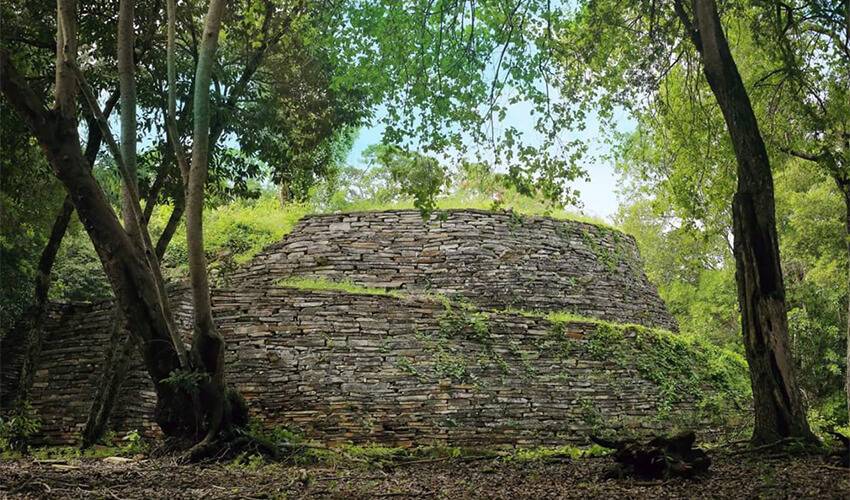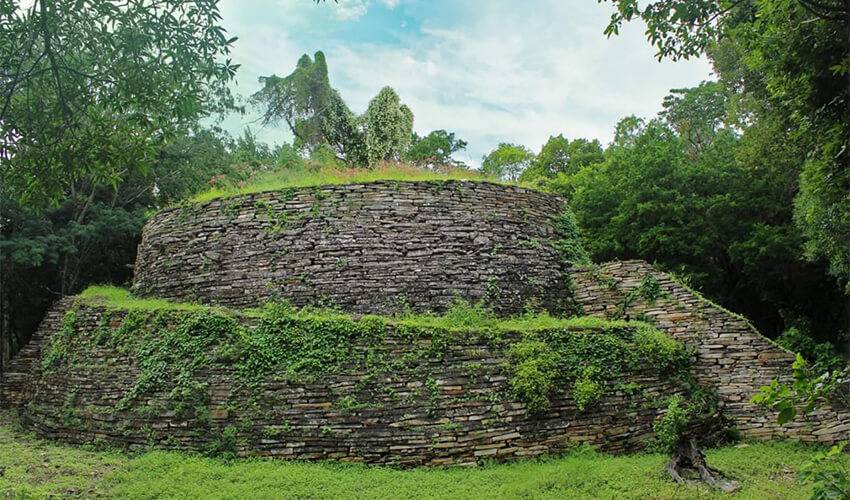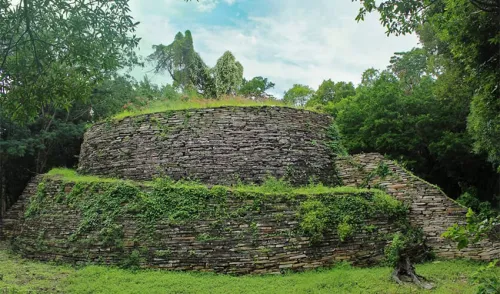El Sabinito is a historical site nestled in the northeastern state of San Luis Potosí, Mexico. It’s a treasure trove of history, showcasing the ruins of a once-thriving settlement. The site offers a glimpse into the lives of the people who lived there centuries ago. El Sabinito’s stone structures and artifacts tell stories of the past, inviting visitors and researchers to uncover its secrets. The site’s significance lies not only in its physical remains but also in the cultural and historical insights it provides.
Get your dose of History via Email
Historical Background of El Sabinito
El Sabinito, shrouded in mystery, was discovered in the 20th century. However, its exact discovery details remain elusive. The site’s creators were the Huastec people, known for their distinct culture and contributions to Mesoamerican history. El Sabinito served as a residential area, with evidence suggesting it was inhabited by the elite. Over time, it witnessed various historical events, including the Spanish conquest, which led to significant cultural shifts.
The Huastecs built El Sabinito, and their craftsmanship is evident in the site’s architecture. The settlement’s structures, made from local stone, reflect the Huastec’s understanding of their environment. After the Huastecs, other groups may have inhabited the site, leaving their mark on its history. El Sabinito’s strategic location suggests it played a role in regional trade and politics.

El Sabinito’s significance extends beyond its physical remains. It offers insights into the Huastec civilization and their way of life. The site’s discovery has sparked interest among historians and archaeologists, eager to learn more about this lesser-known Mesoamerican culture. El Sabinito’s ruins serve as a historical record, preserving the legacy of its builders for future generations.
While not the scene of any famous historical events, El Sabinito’s everyday life provides valuable information. The settlement’s layout and artifacts suggest a society with social stratification and cultural richness. El Sabinito’s history is a testament to the Huastec people’s resilience and adaptability in the face of changing times.
Today, El Sabinito stands as a silent witness to the past. Its ruins offer a tangible connection to the Huastec civilization, inviting exploration and interpretation. The site’s discovery has added a new chapter to the history of Mesoamerica, enriching our understanding of the region’s diverse cultures.

About El Sabinito
El Sabinito’s ruins are a testament to the Huastec civilization’s architectural prowess. The site features stone structures that have withstood the test of time. These buildings were constructed using local materials, showcasing the Huastecs’ resourcefulness and ingenuity. The settlement’s design reflects a deep understanding of the natural landscape and the needs of its inhabitants.
The main structures at El Sabinito include residential buildings, plazas, and possibly ceremonial centers. The buildings’ remains suggest they were once multi-storied, with intricate designs and functional spaces. The use of stone in construction provided durability and a sense of permanence to the settlement.
Architectural highlights of El Sabinito include the remnants of columns and intricate stonework. These elements hint at the aesthetic values of the Huastec people and their skill in stone carving. The site’s layout indicates a planned community, with spaces designated for different activities and social interactions.
The construction methods of El Sabinito reveal the Huastecs’ advanced understanding of engineering and architecture. The buildings were designed to accommodate the region’s climate and topography. This foresight ensured the settlement’s longevity and functionality.
El Sabinito’s architectural remains are not just historical artifacts: they are works of art. The craftsmanship evident in the ruins speaks to the cultural importance of architecture to the Huastec civilization. The site’s buildings were more than just shelters: they were expressions of identity and social status.
Theories and Interpretations
El Sabinito’s purpose has been the subject of various theories. Some suggest it was a residential area for the elite, while others propose it had ceremonial significance. The presence of plazas and the arrangement of buildings lend credence to these theories, indicating a space for both private life and public gatherings.
The mysteries of El Sabinito include the reasons for its eventual abandonment. Some theories point to the Spanish conquest and the resulting cultural upheavals as possible causes. Others speculate that environmental changes or shifts in trade routes may have played a role.
Interpretations of El Sabinito’s artifacts and structures often rely on comparisons with other Huastec sites. Archaeologists match findings at El Sabinito with historical records to piece together the site’s story. This process helps to contextualize El Sabinito within the broader narrative of Mesoamerican history.
Dating of El Sabinito has been carried out using methods such as stratigraphy and radiocarbon dating. These techniques provide a timeline for the site’s occupation and use. The results of such dating efforts help to align the site’s history with known historical events and periods.
El Sabinito continues to be a focus of research and interpretation. Each discovery at the site adds to our understanding of the Huastec civilization and their contributions to Mesoamerican culture. The ongoing study of El Sabinito is crucial for unraveling the complexities of this ancient settlement.
At a glance
Country: Mexico
Civilization: Huastec
Age: The exact age is uncertain, but it dates back to the pre-Columbian era

